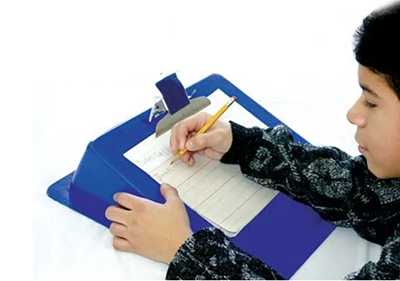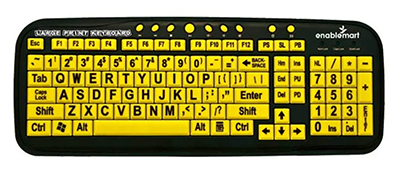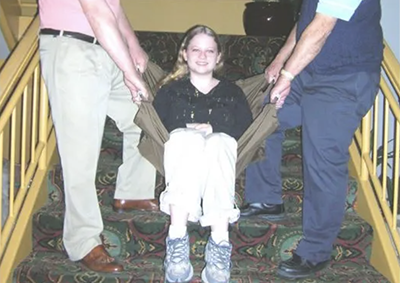Making 2024 the Best Year Ever for All
- By Dr. Raymond Heipp
- Dec 8, 2023
- 0 Comments


Making 2024 the Best Year Ever for All
By: Dr. Raymond Heipp
So, I realize that the title of this blog sounds a little cliché! We tend to hear statements like that every year from pundits trying to cash in on the “new year, new you” ideology and the promotion of “New Year’s Resolutions.” Keeping that in mind as well as trying to stave off another purchase of a stationary bike which becomes a clothes hangar by April, we will take a look at ways that we can inspire the individuals with whom we work to have “Best Me Ever” plans along with some insights into the ending of ESSER III funding and how we can utilize it for the benefit of both current and future students.
Why “Best Me Ever” plans? When we analyze the idea of New Year’s Resolutions as neurotypical adults, we can distinguish that these resolutions are for our own benefit and are ways of tweaking how we approach aspects of our lives. Whether it is looking at habits like smoking cessation, being nice, and diet and exercise to lose a few pounds’ or something more detailed like changing lifestyles to protect again significant health concerns, we can come at these resolutions knowing that it is for our benefit that we are doing these activities. For our individuals, levels of cognitive awareness might not be there to understand the idea behind “resolutions,” thus creating a feeling of inadequacy or lack. We do not want them to approach these plans from the negative. By having them focus on the positive effects of activities that will help to create “Best Me Ever” plans, we encourage them to stay with it and look forward to it as well.
What might these plans include? Let’s look at some common issues our individuals face and see how we can help to create a positive mindset around them. Our first issue surrounds the need to lose weight. When I speak of weight loss with them, I am looking at those individuals who may need to lose 20 or more lbs. for their health and well-being. I have seen too often the idea of promoting weight loss to someone who might not be overweight by a great extent. However, weight loss for them can become an unhealthy fixation which causes significant drops and improper focus. The first thing we should determine if weight loss is something to be added is why the weight is on in the first place. Is the additional weight due to improper eating habits? What if they are due to anxiety or lack of exercise as opposed to eating habits? These questions will help to point us toward the proper approach to take. For example, if there are improper eating habits like “eating one’s feelings” by overeating after stressful situations, then simply teaching about healthy food choices does not make sense. Instead, we want to look at other coping strategies that do not focus on eating.
In speaking with a former student-athlete of mine who has worked in both the exercise and nutritional realms with many individuals, including some you might know, he shared with me that he encourages a weekly “cheat day” when approaching weight loss due to the body simply being out of shape. We discussed the merits of my “Pizza Fridays” and how something like that actually can help a body to acclimate to other foods during the week. Psychologically, these “cheat days” can help give an individual better internal strength when approaching their diets. He has noticed that many of his clients begin to adjust their “cheat days” into healthier foods while more easily acclimating their bodies to an overall diet regimen.
He cautioned about diets though when it came to overeating due to stress or emotional responses. He works with his clients on coping mechanisms first in these cases. He then can see or help a client transition to less overeating issues. With our individuals, we may need to begin with these coping mechanisms. These could include breathing exercises for both daily practice and emergency usage. We might also include some physical activity at the beginning and end of each day. Even something as simple as a walk – a quarter mile or less – can be a good starting point. If we focus on those activities first, we can then move toward the nutritional component. If we start in the wrong order, all the work we might do with nutrition and portion-controlled eating can go right out of the window the first time any stressful event occurs.
Another issue surrounds something we addressed above and that is dealing with stress and anxiety. An individual may not be overeating or have weight issues when anxious. Instead, they may have escalations which can be detrimental to themselves or to others. A “Best Me Ever” plan looks at the causes of these escalations and addresses activities, like breathing, that can be used in several different ways. We are teaching life skills to our individuals in this case and encouraging them to deal with their stress and anxiety in positive manners.
Exercise is another aspect of the “Best Me Ever” plan. Again, we want to start with what the individual can do and build off that. We then want to move into areas that might interest them and let them add more activities to their own exercise portfolio. A slow build of exercises along with directing them toward lifelong activities is most beneficial here.
Notice what we have been doing throughout this blog. Let’s start with the “Best Me Ever” designation. Our foundation is that we are already good and that we are moving to the “best” version. That is not only a positive move but can be improved upon each year. We are not focusing on the negative aspects of our life. Instead, we are looking at causes and how to handle them in a healthy manner. We want our individuals to be excited for these plans and apply them daily to life. We don’t want them to feel they are failures by setting benchmarked numbers which may or may not be reached. We want them to begin to have healthier approaches to life and the other issues or concerns will be addressed as a positive side-effect.
As enter into 2024, we still have until September 30th to spend the ESSER III funds. All Assistive Technology is eligible to be purchased using these funds. Assess what you are already using in your school or district and bring in technology which may fill in some gaps. Look to create your own AT Assessment/Trial kits that can be utilized by teachers, therapists, AT Specialists, and yourself in the future. Consider making AT as transparent as possible in the buildings by re-visioning how to use some of the older AT in standard classrooms or offices, e.g. using a QuickTalker 12 as a support with a book like Goodnight Moon to let students “read” to themselves at the press of a button. Bring in new AT to support the current student population with an eye toward future students as well. We can use these funds to help so many students and don’t want them to go to waste. If you have questions on what might be good to have in your building or would like some ideas of how to use your current AT in other ways, please feel free to reach out to me at rheipp@schoolhealth.com.
2024 will be the best year for all of us! What is your “Best Me Ever” plan going to be?












